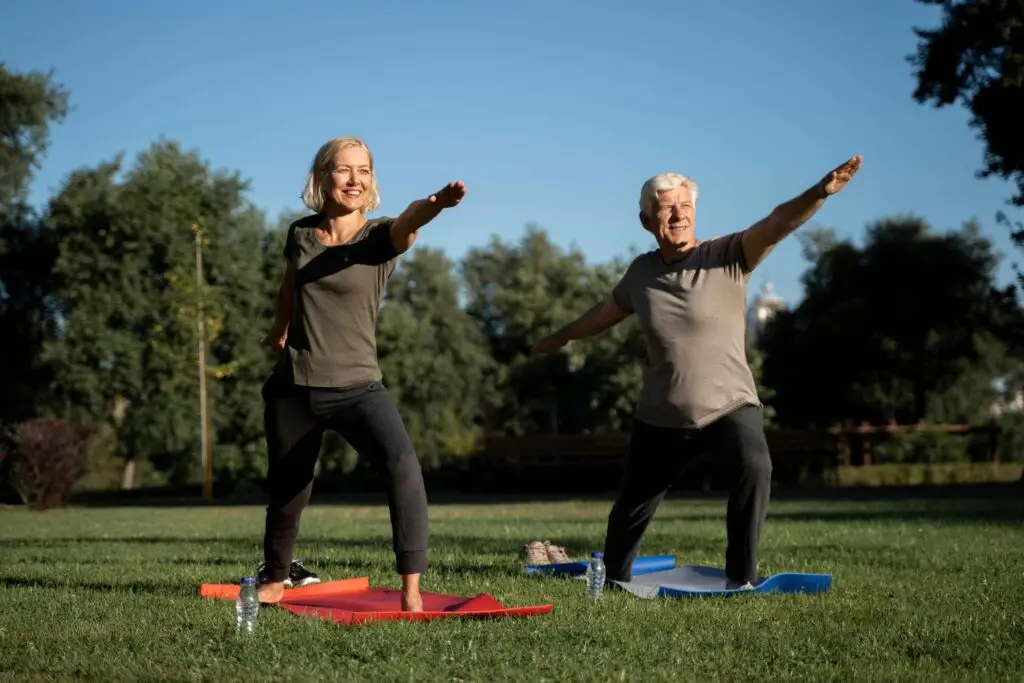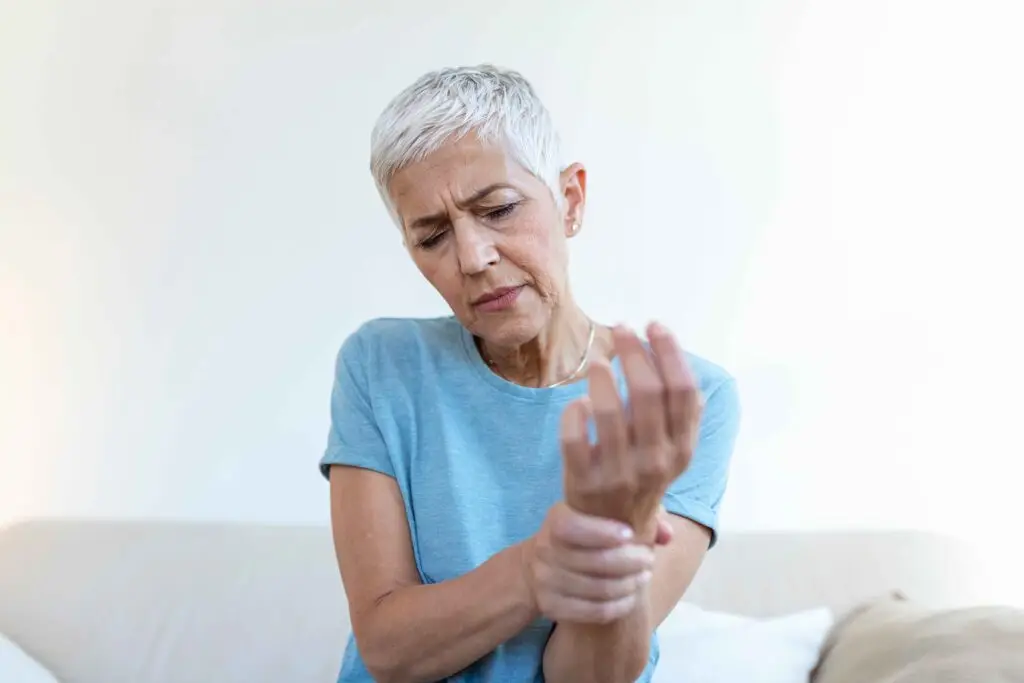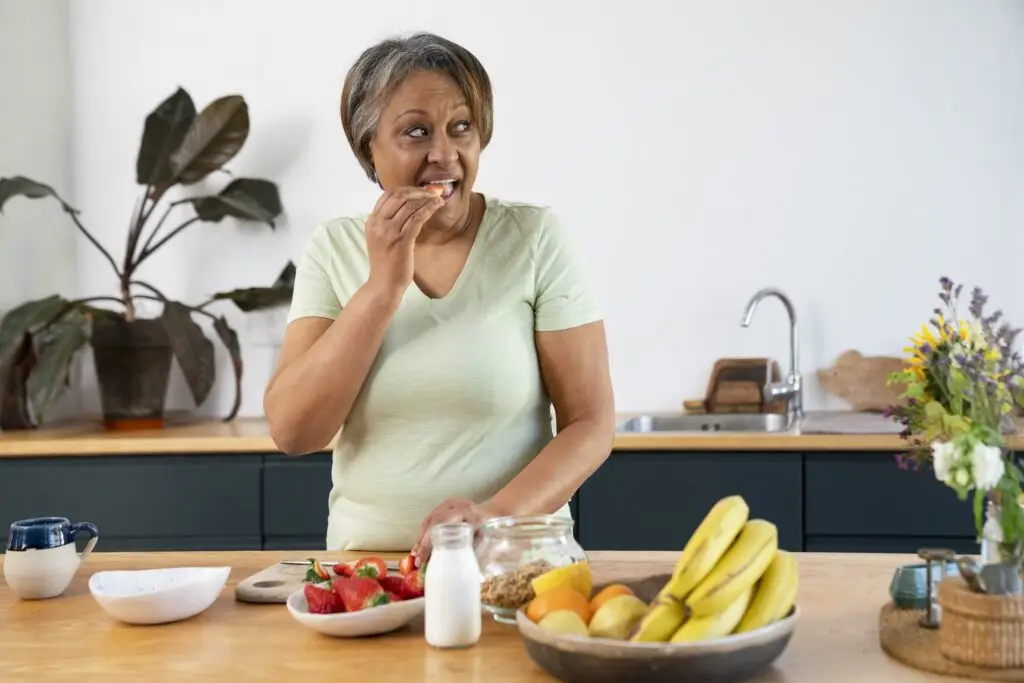How to Manage Chronic Pain Without Heavy Medication
Chronic pain can feel like an unwanted companion always there, often loud, and hard to ignore. For older adults, especially, it can creep into daily life, whether it’s stiff knees in the morning, a sore back after chores, or ongoing aches that don’t seem to leave. While medications can sometimes help, relying on heavy drugs like strong opioids often comes with risks: side effects, dependence, and interactions with other prescriptions.
The good news? You don’t have to face pain with pills alone. Decades of research show that non-pharmacological pain management meaning therapies and strategies that don’t involve medication can ease discomfort, improve mobility, and help people live more fully. From exercise and mindfulness to heat therapy and community classes, there are safe and effective ways to take back control.
This guide walks you through the most trusted, practical methods for managing chronic pain without heavy medication. It’s not about ignoring pain; it’s about learning how to reduce it, cope with it, and keep doing the things you value most.
What is Chronic Pain?
Chronic pain isn’t just “a sore joint” that lingers. Doctors define it as pain lasting longer than three months, often continuing even after the initial injury has healed. For many older adults, it shows up in conditions like:
- Osteoarthritis (wear-and-tear joint pain).
- Chronic low back pain.
- Neuropathic pain (nerve-related).
- Fibromyalgia (widespread body aches and fatigue).
Pain affects more than the body. It can interfere with sleep, lead to frustration, and limit independence. That’s why experts recommend comprehensive pain relief therapy—addressing both the physical and emotional side of pain.
What are the four A’s of chronic pain?
Doctors often use the “Four A’s” to track how well pain management is working:
- Analgesia – how much pain relief the treatment provides.
- Activities of daily living – whether you can function better day to day.
- Adverse effects – any side effects from medication or therapy.
- Aberrant behaviors – signs of misuse or dependency when medications are involved.
This framework helps ensure care is safe, balanced, and focused on more than just pain scores.
Why Avoid Heavy Medication?
While medications can play an important role, especially during flare-ups, long-term reliance on heavy painkillers can be harmful. Risks include:
- Side effects: drowsiness, dizziness, confusion, constipation.
- Drug interactions: especially with blood pressure or heart medicines.
- Dependence and tolerance: needing more medication for the same effect.
- Falls and accidents: especially common in older adults due to slowed reflexes.
That’s why the CDC and other health organizations recommend starting with non-pharmacological treatments for pain and layering in medication only when necessary.
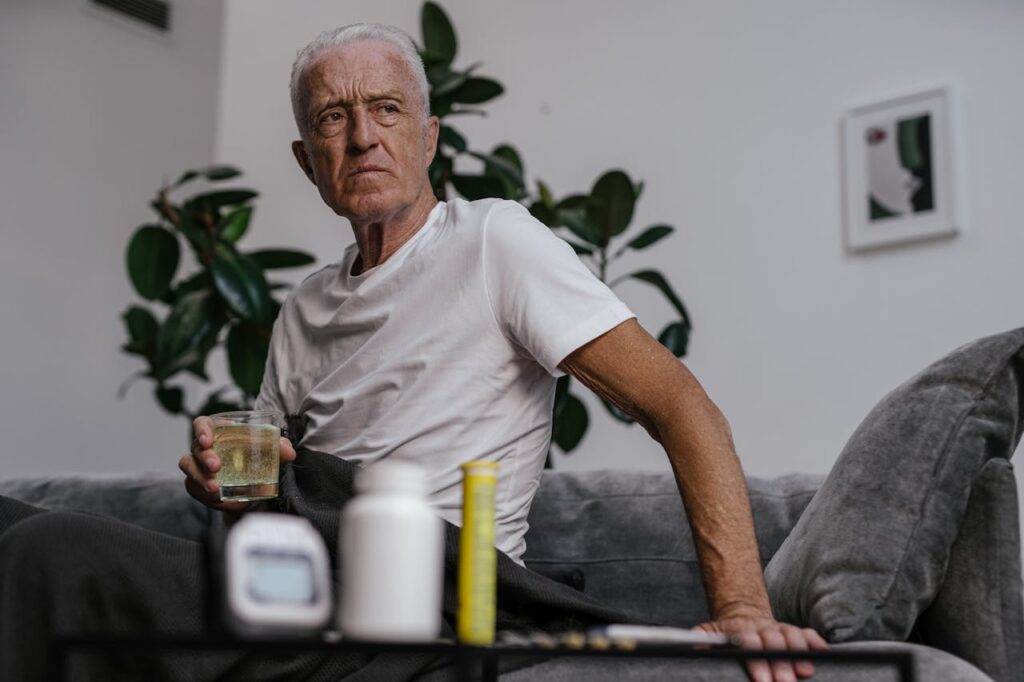
Evidence-Based Non-Pharmacological Pain Management/How do people cope with chronic pain?
1. Exercise: Movement as Medicine
Why it works: Exercise doesn’t just strengthen muscles it rewires how your body registers pain. Regular movement reduces inflammation, improves joint lubrication, and floods your brain with feel-good endorphins.
- Low Back Pain: Clinical trials show that personalized exercise programs combining mobility, stretching, and core control reduce disability more effectively than usual care. Researchers note that consistency matters more than intensity better to do 10 minutes daily than one heroic workout.
- Osteoarthritis (Knee/Hip): According to the UK’s NICE guidelines, multi-component exercise (strength, aerobic, balance) can cut pain by 20–50% and significantly improve walking speed and stability.
- Systematic Evidence: A 2017 review of over 20 studies found consistent, moderate-quality evidence that exercise therapy decreases pain-related disability across a wide range of chronic pain conditions.
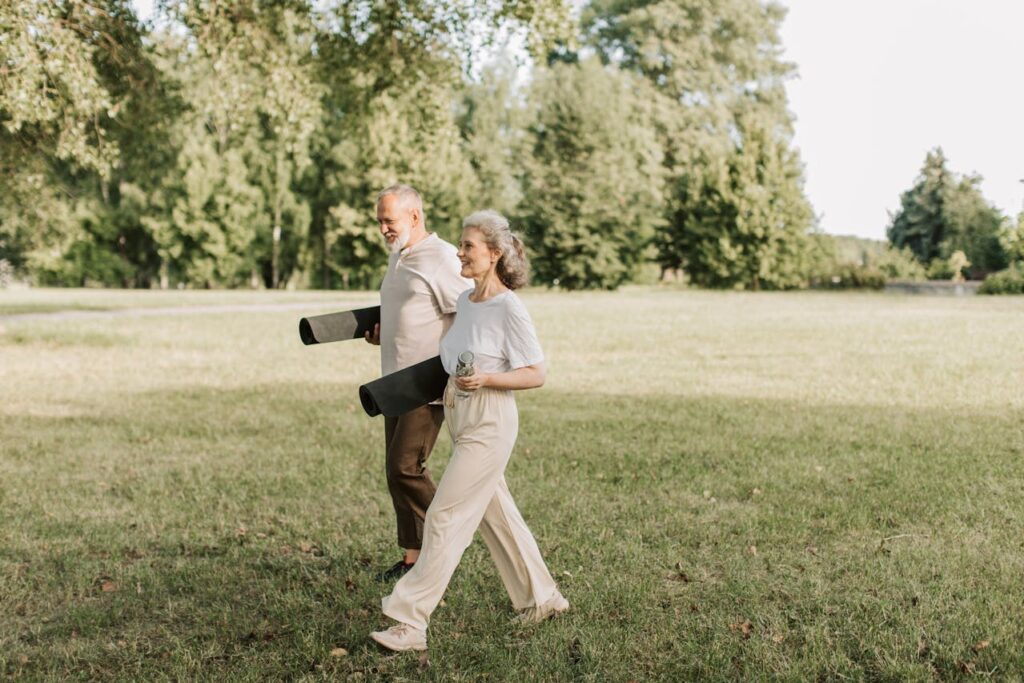
How to do it safely:
- Start with a pain log: note pain before and 1 hour after movement.
- Build a weekly plan:
- Aerobic: walking, cycling, water aerobics (start 5–10 min, build slowly).
- Strength: chair sit-to-stands, resistance bands, wall push-ups.
- Balance: heel-to-toe stands, single-leg stance (near support).
- Progress slowly—add 2–3 minutes or one extra rep each week.
- Mild soreness is fine; sharp pain means ease back.
2. Weight Loss and Load Management
Why it matters: Losing even 5–10 pounds reduces knee joint stress by 20–40 pounds a game-changer for joint pain relief.
- Evidence in action: Randomized controlled trials show that combining calorie reduction with moderate exercise produces significantly greater pain relief and mobility gains than either alone. In one long-term study, a 10% weight reduction over 18 months cut knee osteoarthritis pain scores nearly in half.
Gentle path forward:
- Make small changes: swap sugary drinks, downsize portions, and add lean protein and vegetables.
- Keep it gentle: walking 20 minutes 5x/week plus dietary tweaks is safe after 60.
- Track progress with weigh-ins, a mobility journal, or even your “favorite jeans” test.
This is a practical non-pharmacological pain relief strategy that pays off steadily.
3. Minds Over Matter: Cognitive & Behavioral Therapies
The brain–body connection: Pain isn’t just tissue damage—it lives in your nervous system, shaped by thoughts, emotions, and context. That’s why psychological interventions are key nonpharmacologic treatments.
- Cognitive Behavioral Therapy (CBT): Shown to reduce negative “catastrophizing” thoughts and build coping strategies, leading to moderate improvements in both pain intensity and function.
- Acceptance & Commitment Therapy (ACT): Helps patients accept persistent pain while focusing on purposeful, values-driven activities. Studies confirm improved daily function even when pain continues.
- Mindfulness-Based Stress Reduction (MBSR): Mindfulness, meditation, and gentle movement reduce perceived pain and improve mood disturbances like anxiety or depression.
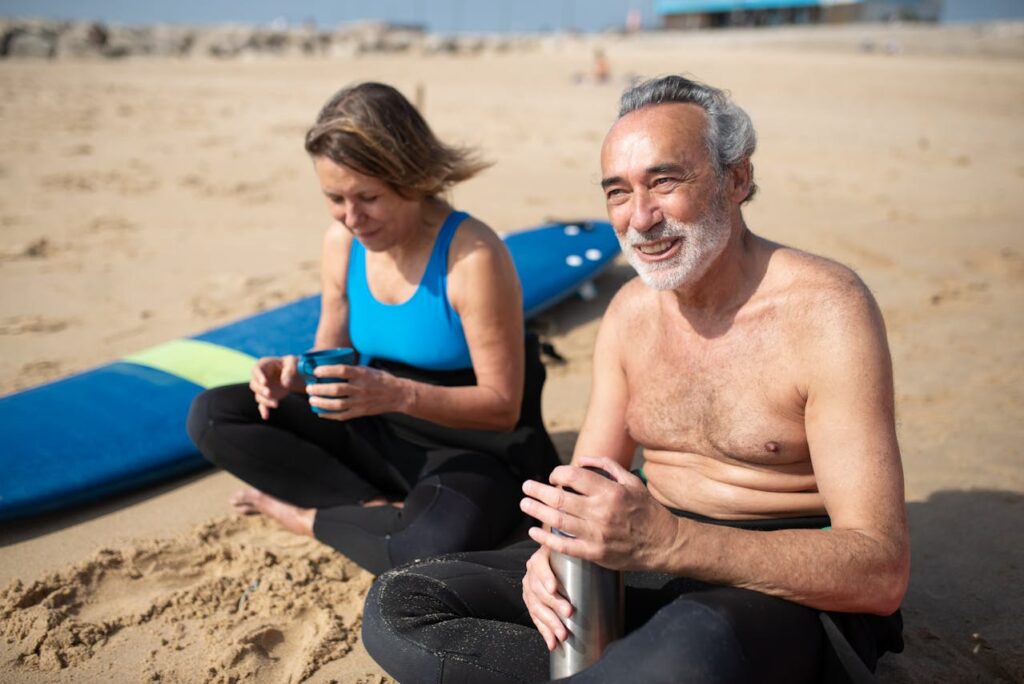
Putting it into practice:
- Use CBT-based apps like CBT-i Coach or PainScale for short daily exercises.
- Explore group programs—many insurers cover virtual or telehealth-based chronic pain support.
- Try 10 minutes of guided mindfulness or a body scan daily, then expand into mindful walking or eating.
These are safe, effective alternative pain management techniques for those seeking tools beyond medication.
4. Hands-On & Therapist-Guided Supports
Pair your movement plan with therapist-guided interventions:
- Heat therapy: 15–20 minutes of a warm pack or hot shower can ease stiffness and relax muscles.
- Manual therapy: Massage or spinal manipulation often brings short-term pain reduction, especially when combined with exercise.
- Acupuncture: Studies show modest but significant benefits in chronic low-back and knee osteoarthritis pain.
- Tai Chi & Yoga: Joint-friendly movement that strengthens, improves balance, and reduces stiffness.
How to proceed safely:
- Check practitioner credentials (PT, licensed massage therapist, certified acupuncturist/yoga instructor).
- Share your health history osteoporosis, joint replacements, or blood thinners matter.
- Use these supports as a reset button during flares, while staying consistent with your exercise and psychological strategies.
5. Education & Self-Management = Your Daily Superpower
Why it matters: Chronic pain often recurs. Programs that combine education, pacing, coping strategies, and activity consistently outperform advice alone.
- Structured programs like the French Chronic Disease Self-Management Program improve confidence, reduce pain, and encourage healthier behaviors.
- Online platforms like Stanford’s Pain Self-Management offer peer support and interactive modules on pacing, sleep, and goal-setting.
Start your journey:
- Download trusted geriatric pain guides (like those from the National Institute on Aging).
- Join local senior programs—many offer group pain workshops.
- Buddy up with a friend for accountability.
This makes self-care a nonpharmacologic pain management strategy you can control daily.
30-Day Plan – A Gentle Step-Up
| Week | What You Do | Goal |
| Week 1 | Walk 10 min/day; 2×8 sit-to-stand; heat in morning; track pain | Build a baseline and ease into movement |
| Week 2 | Walk 12–15 min + evening walk; 2× wall push-ups; try a tai chi class | Add consistency and gentle variety |
| Week 3 | Meet PT if needed; start weight-loss tweaks; daily breathing practice | Reduce joint load and stress |
| Week 4 | 150 min/week of activity; 2× strength work; improve sleep routine; try CBT-I or mindfulness | Build endurance and coping tools |
This pain management at home plan offers simple, progressive steps.
At-Home Pain Management Techniques
Wondering how to relieve pain without medicine? These strategies offer safe, quick relief:
- Heat therapy: Heating pads or warm compresses for stiffness.
- Cold packs: Reduce swelling or sharp pain.
- Gentle stretches: 5–10 minutes each morning to loosen muscles.
- Posture support: Cushions, ergonomic chairs, supportive shoes.
- Topical creams: Capsaicin or menthol rubs for local discomfort.
- TENS devices: Mild electrical impulses that offer pain relief without medication.
Lifestyle Tips for Long-Term Pain Reduction
- Stay socially active: Isolation often worsens pain perception.
- Prioritize sleep: 7–8 hours with a consistent routine improves coping.
- Eat anti-inflammatory foods: Fish, olive oil, leafy greens, berries.
- Set small goals: Aim for “more active” or “less limited,” not “pain-free.”
These are everyday pain management tips that build resilience.
FAQs
What is the strongest natural pain reliever?
There isn’t one single “strongest” natural option, but several well-researched remedies can help:
- Turmeric/curcumin – anti-inflammatory effects, especially for arthritis.
- Omega-3 fatty acids – from fish oil or flaxseed- may reduce joint pain.
- Capsaicin cream – applied to the skin for nerve or arthritis pain.
- Mind-body therapies – meditation and breathing exercises reduce perceived pain intensity.
For most people, exercise and weight management remain the most powerful “natural” pain relievers, with supplements acting as add-ons.
What are the 5 coping skills every chronic pain patient needs?
Experts often highlight five essential coping skills:
- Relaxation & breathing techniques – to calm pain flare-ups.
- Cognitive reframing – changing negative “this will never get better” thoughts.
- Pacing – breaking tasks into smaller chunks to avoid overexertion.
- Problem-solving – finding practical adjustments (like ergonomic chairs or heat pads).
- Staying engaged – maintaining hobbies, social life, and daily structure to protect mood.
Together, these skills help patients manage pain while protecting quality of life.
What is the most painful chronic pain condition?
Pain is subjective, but research and patient reports consistently rank conditions like:
- Trigeminal neuralgia (often called the “suicide disease”)—sharp, electric shock-like facial pain.
- Cluster headaches—intense head pain in cyclical patterns.
- Complex Regional Pain Syndrome (CRPS)—burning, constant pain in limbs.
These are often described as among the most severe chronic pain conditions, though every individual’s experience differs.
What is the safest pain medication for long-term use?
For older adults and long-term management, the safest options are usually non-opioid medications, when necessary and monitored:
- Acetaminophen (paracetamol) – generally safe for daily use in moderate doses (avoid overuse to protect the liver).
- Topical NSAIDs (like diclofenac gel) – lower risk than oral NSAIDs, effective for arthritis.
- Certain antidepressants or anticonvulsants – sometimes used at low doses for nerve-related pain.
Opioids are not recommended for long-term use due to risks of dependence and side effects. Always review medication plans with a clinician to balance benefits and risks.
Conclusion
Chronic pain may be part of life, but it doesn’t have to control your life. By focusing on non-pharmacological interventions for pain like exercise, weight management, mindfulness, sleep, and supportive therapies you can find meaningful relief from pain without relying on heavy drugs.
The key is consistency. Pain relief is rarely instant it builds as your body and mind adapt over weeks and months. With the right plan and support from your doctor, a physical therapist, or even local community classes you can manage pain in safe, empowering, and sustainable ways.
Remember: the goal isn’t to get rid of pain completely, but to regain independence, improve quality of life, and keep doing what matters most.



